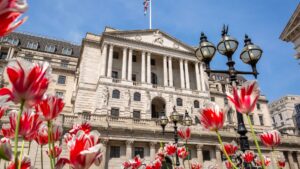Welcome to Extreme Investor Network, where we provide you with unique insights into the latest economic trends and news that impact your investment decisions. Today, we delve into the recent decision by the Bank of England to keep interest rates steady at its June meeting.
The central bank described the decision as “finely balanced” after U.K. inflation reached its 2% target. This decision comes at a time when markets are speculating about a potential rate cut in August, with the odds rising to nearly 50-50 following what investors perceived as subtly dovish messaging.
The Bank of England’s key rate remains at a 16-year high of 5.25%, where it has been since August 2023. The Monetary Policy Committee saw seven members voting to hold, while two favored a 25 basis point cut, mirroring the May meeting.
Inflation data for May showed headline price rises cooling to 2%, hitting the target ahead of both the U.S. and the euro zone. However, economists caution that the U.K.’s high rates of services and core inflation suggest the potential for ongoing upward pressure.
Looking ahead, attention will now turn to the prospects of an August rate cut. The MPC highlighted that the decision to hold was “finely balanced,” with disagreements among members over the level of evidence required to warrant a cut. Some analysts believe that a rate cut is getting closer, with developments such as the “finely balanced” comment and the overall tone of the BOE remaining neutral since May.
In a global context, other central banks in Europe have already begun easing monetary policy to stimulate economic growth. The U.S. Federal Reserve is also being closely watched, with money market pricing suggesting a 65% chance of a rate cut in September.
As the economic landscape continues to evolve, the British pound extended losses against the U.S. dollar, trading 0.3% lower at $1.267 in London.
Stay tuned to Extreme Investor Network for more exclusive insights and expert analysis on the ever-changing world of economics and investments.

